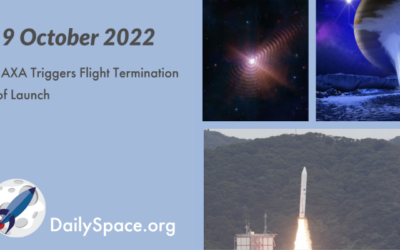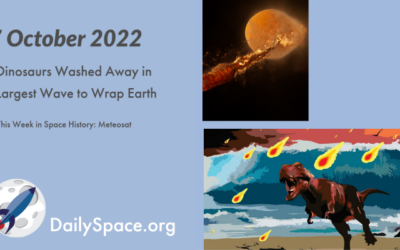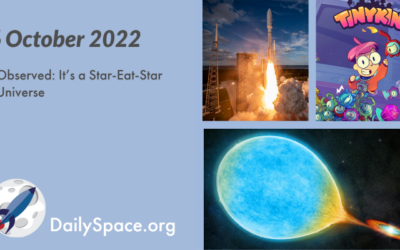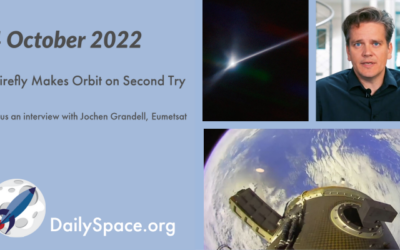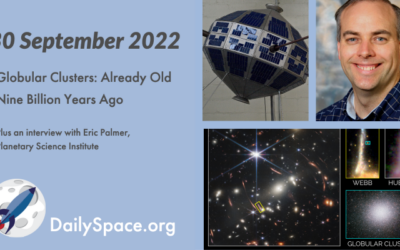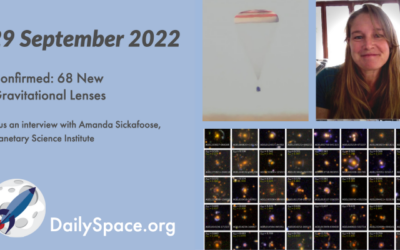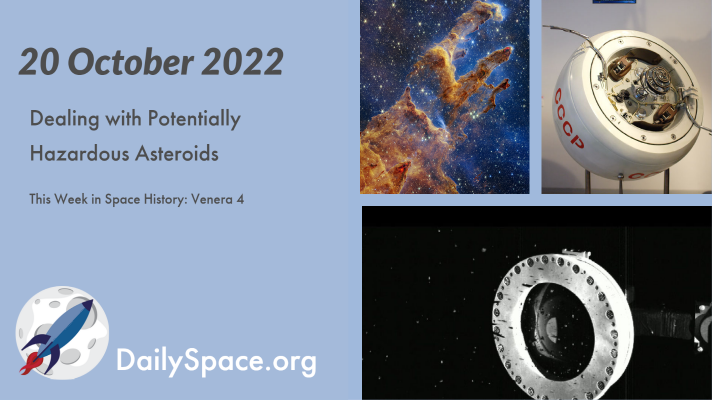
Dealing with Potentially Hazardous Asteroids
A trio of asteroid-related stories crossed our emails this week: Bennu’s sample is on schedule for next year’s return, researchers have developed a tool to measure an asteroid’s density distribution, and 3200 Phaeton’s rotational period has accelerated. Plus, JWST’s new Pillars of Creation image, and this week in space history, we look back at Venera 4.
Catch us on NowMedia TV
Saturday 11pm Central / midnight Eastern
Sunday 10pm Central / 11pm Eastern
Watch live on these stations: Houston 21.10, Atlanta 22.10
or tune-in on Apple TV, Roku, YouTube Live, or Amazon Prime
JAXA Triggers Flight Termination of Launch
Space is hard, and some days, getting rockets to work doesn’t go as well as expected. An Epsilon rocket launched by JAXA and carrying eight payloads including RAISE 3 was lost when mission control triggered the flight termination system due to an attitude issue. Plus, stars blowing dust rings, stars exploding, asteroids getting hit with spacecraft, and Europa’s geysers may not come from the subsurface ocean.
Dinosaurs Washed Away in Largest Wave to Wrap Earth
As if getting set on fire and tossed into space wasn’t enough, new research finds evidence that after the Chicxulub impact, dinosaurs were also the victims of a massive global tsunami and worldwide earthquakes. Plus, the Milky Way’s stellar graveyard, a new timeline for the Moon’s formation, and this week in space history, we look back at the Meteosat program.
Observed: It’s a Star-Eat-Star Universe
While astronomers have observed white dwarfs consuming companion stars on numerous occasions, for the first time, they have now observed the consumption of the companion’s helium and not just hydrogen. Plus, galactic alignment, rocket launches including Crew 5, a new Europa image, and a review of the video game “Tinykin”.
Firefly Makes Orbit on Second Try
Early Saturday morning, another company entered the exclusive club of successful orbital launchers, Firefly Aerospace, when their second attempt to reach orbit, named To The Black, lifted off on October 1. Plus, a crater in Spain, a new DART image, Juno flies by Europa, and an interview with Jochen Grandell regarding the Meteosat program.
Globular Clusters: Already Old Nine Billion Years Ago
The quest to understand the formation mechanisms of globular clusters was limited by the Hubble Space Telescope’s ability to peer back in time. Now, JWST’s larger mirror has allowed astronomers to find gravitationally lensed galaxies that have globular clusters almost nine billion years old. Plus, two new super-mercury exoplanets, This Week in Space History, and an interview with Eric Palmer about the DART mission.
Confirmed: 68 New Gravitational Lenses
Using a machine learning algorithm, scientists have confirmed 68 out of 77 potential gravitational lens candidates from a subset of over 5,000 possibilities. Plus, generation one stars, astronauts coming home, dating craters on Earth, lunar glass, and an interview with Amanda Sickafoose regarding the DART mission.


 We record most shows live, on Twitch. Follow us today to get alerts when we go live.
We record most shows live, on Twitch. Follow us today to get alerts when we go live.

